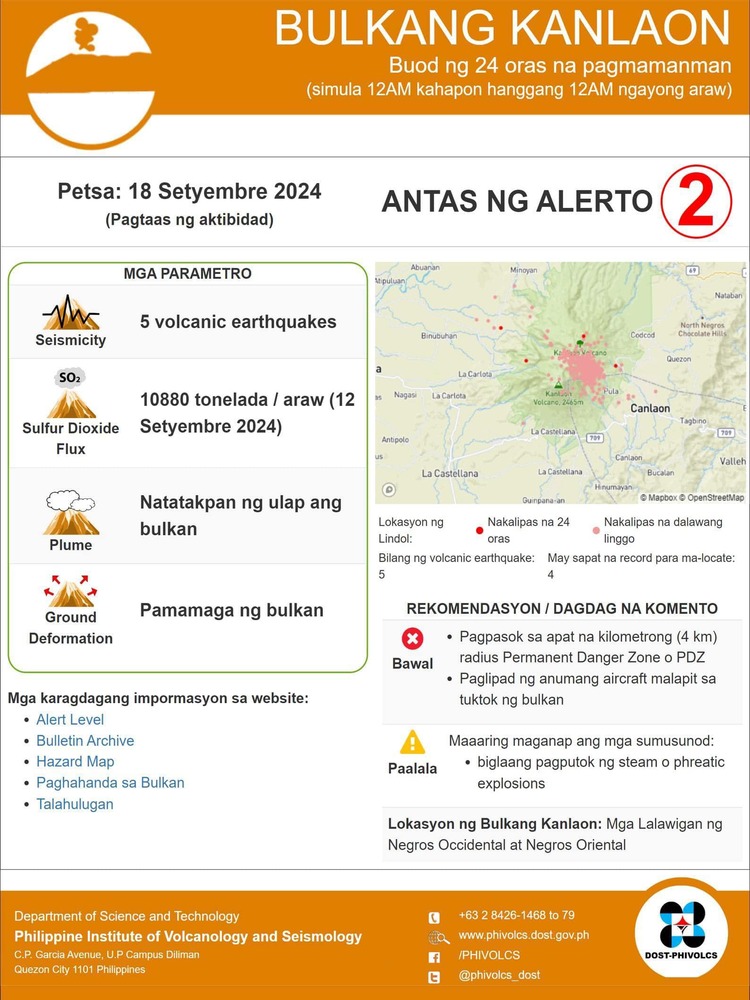As of September 18, 2024, Mt. Kanlaon continues to exhibit heightened volcanic activity, with significant emissions of sulfur dioxide and increased volcanic earthquakes. According to the Philippine Institute of Volcanology and Seismology (PHIVOLCS), the volcano has released 10,880 tons of sulfur dioxide over the past six days, starting from September 12 until 12:00 AM today. This level of gas emission is a critical indicator of magma movement beneath the volcano.

In addition to the sulfur dioxide output, PHIVOLCS recorded five volcanic earthquakes within the last 24 hours. These tremors, while not causing immediate damage, suggest ongoing seismic activity beneath Mt. Kanlaon, which could lead to further volcanic events.
The monitoring agency also observed continuous swelling or deformation of the volcano’s edifice. This is another sign that magma is building up inside Mt. Kanlaon, which could eventually lead to an eruption. As a result, the volcano remains under Alert Level 2, indicating moderate unrest and a possible magmatic eruption.
PHIVOLCS urges residents and visitors to stay vigilant, as the ongoing activity poses potential hazards. The public is reminded to avoid entry into the four-kilometer permanent danger zone (PDZ) around the volcano to ensure safety. This area is at high risk of sudden phreatic or steam-driven eruptions, rockfalls, and other volcanic hazards.
Airlines are also advised to steer clear of flying near the summit of Mt. Kanlaon, as ash and volcanic materials could pose a risk to aircraft. Local authorities are closely coordinating with PHIVOLCS to ensure the safety of the surrounding communities and to disseminate information promptly.

While Mt. Kanlaon is one of the most active volcanoes in the Philippines, its current behavior requires constant monitoring. PHIVOLCS continues to monitor seismic activities, sulfur dioxide emissions, and any changes in the volcano’s structure. Further updates will be provided as new data becomes available.
Residents are encouraged to remain informed through official channels and to heed the advisories from PHIVOLCS and local authorities.
